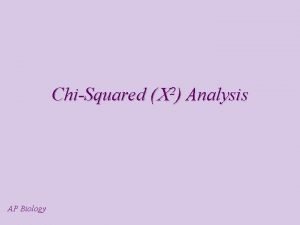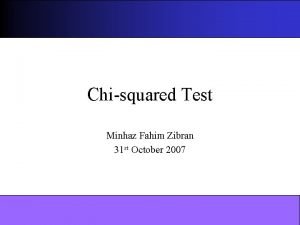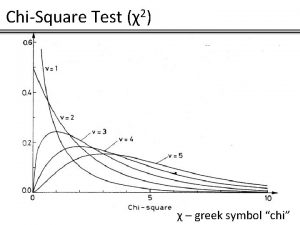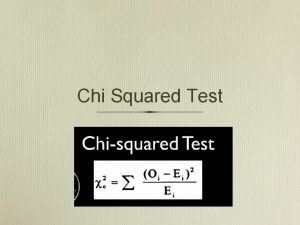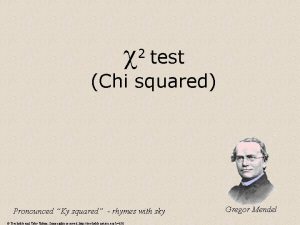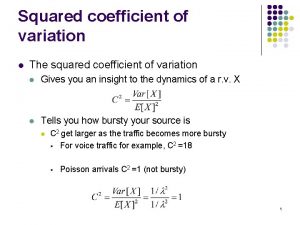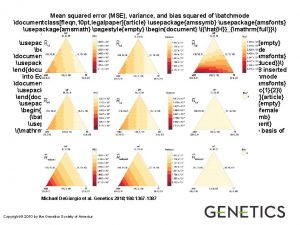Chi Squared Equations This is different from the








- Slides: 8

Chi Squared Equations • This is different from the probability problems we worked on earlier • This equation helps us to decide whether or not the outcome of the offspring are being influenced by an outside force • In other words, are the results completely from genetics or could there be something else influencing them

• X = chi squared • = summation • O = observed results • e = expected results

• Degree of Freedom = this is the number of possible outcomes minus 1 – Flipping a coin will get you two outcomes (heads or tails) – 2 -1 = 1 1 is the Degree of Freedom • ONLY pay attention to the 0. 05 column!!!!

Example: • You count the gender of babies born in Seneca county in the month of June. Your results are below: Observed Results (O) Expected Results (e) (o-e)2 Males 58 60 Females 62 60 (58 -60)2= 0. 066 60 (62 -60)2= 0. 066 60 Total # 120 e 0. 13 • Now take the number you just calculated (0. 13) and compare it to the Critical value table

• Find the Degree of Freedom calculated earlier (1) and the number in that row in the 0. 05 column (3. 841) • Is the number we calculated in the Chi Squared equation (0. 13) LARGER or SMALLER than that number?

• If it is LARGER then you must REJECT the null hypothesis and it means that there IS something that is influencing your results • If it is SMALLER then you must ACCEPT the null hypothesis and it means that these results are not being influenced by outside forces

• Null Hypothesis - that there is no significant difference between the observed results and the expected results

That’s All!

